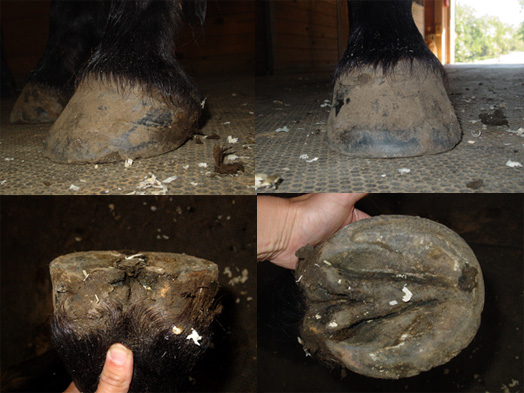|
Eleven Months and BeyondDruid looks phenomenal and acts it too!May 12, 2004Eleven MonthsI only have before trim pictures from this month. The wall has continued to break out and from the sole picture; you can see that the wall is pulling off in a big piece. I just trimmed it from the top and re-rounded the walls.
September 22, 2004Fifteen Months
Druid's feet are surprisingly normal now. I never expected them to look this good.All along, Druid has done well on soft surfaces. He occasionally was OK on gravel, but not consistently (March is always his best month). I will say it again, exercise helped Druid the most. The more he was worked, the better he went. Again, exercise helps the most. January 16, 2005I just wanted to show how much better his feet looked a year and a half since the sole penetration. 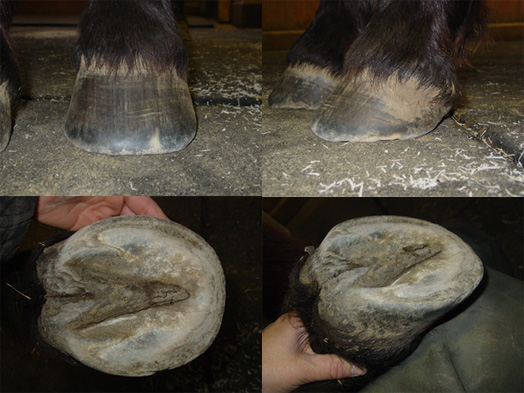
March 16, 2005This is Druid's left hind foot. Everything looks fine in this shot. 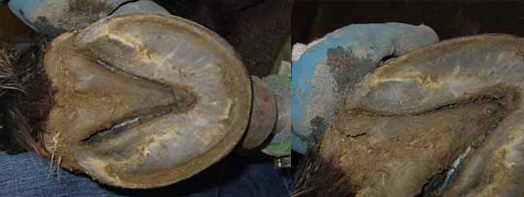
If you look carefully down in the collateral groove, you can see that the bar is peeling again. I have stuck the hoof pick in under the bar and sole. 
There is a hole in the toe area also. All of this is from an abscess that he had months ago. 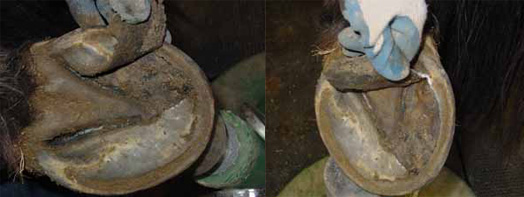
The sole is peeling off. It will not do this until the sole underneath has hardened off or keratinized. It means the old sole is no longer acting as a scab. The underlying sole is now healthy. 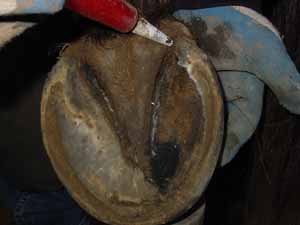
Even the bar peeled. This is the one and only abscess that Druid has had since November 2003. July 2006Druid has been a part of my life for over three years now. I love that I still trim him and get to see him regularly. In July of 2005, Haley was researching the Loudoun Therapeutic Riding Center for a retired Fox Hunter that needed a home. As soon as she learned about the Center, she knew it was the place for Druid. He was doing well at her barn, but he was not getting the regular exercise that he needed. Her three kids and busy life kept her from riding him enough to keep him in shape. Because he wasn't getting enough exercise, he was stuck living in a dry lot with no company. Therapeutic Riding sounded like a perfect fit, he would be worked regularly and would live in a herd. Haley spoke with Joanne Hart and Kathy Blane. They were willing to try Druid, but knew of his founder history. Joanne actually owns Druid's sire and had seen Druid at his worst. They decided to take a chance and see if this was his calling. It is! Go to http://www.ltrf.org/programs/ponies/ to see Druid at work. I will hopefully get more pictures of him doing his job and add them to this page. I had a great picture of Druid's paddock, but cannot find it right now. In the spring I will take another one to show how much green there is in his pen. Druid is no longer living a solitary life in a dry lot. He lives with a group of geldings at the Center. The paddock has very little grass, and he is doing fine on this. We feel he can handle the grass now because he is getting regular exercise. If he was not in work, I imagine this would not be an ideal living situation for Druid. Exercise is truly the best when dealing with a laminitic horse. They have also religiously kept him on the Magnesium/ Chromium supplements. This combination seems to be crucial for Druid. Keeping a horse barefoot can be terribly inconvenient at times, but it is a life saver for Druid. We use his feet to tell us when his diet has become too rich. He always minces across gravel, but if he really cannot walk on it, we know he needs a change. Something in his environment is causing a problem. He may need more exercise or less grass or a less rich hay. All we know is that we trust his feet. The are an early warning system! He may be ouchy on gravel, but he is very comfortable in the ring, and they boot him for trail rides. This has worked well for a year now. 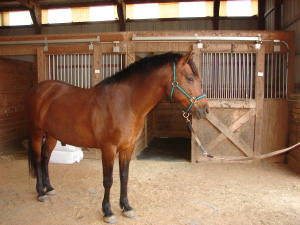
Look at how good Druid looks. He loves his job and does it well. 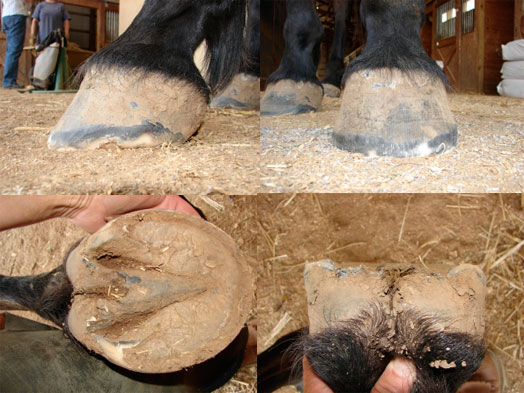
His feet continue to look good. SummaryDruid is a teacher. He taught me a lot, and I hope he will show others what is possible. I have been involved in other sever founder cases. Some horses do very well and others do not. What I have learned is that you have to keep looking and trying different approaches. I have seen many situations where the owners are convinced that the diet is not the problem, yet the horse does not improve. When a horse continues to do badly, try something different. A "handful" of grain may be too much sugar. Ten minutes of grass may push the horse over the edge. The hay that the horse eats eagerly may be way too rich. If it is green and grows, it may have too much sugar for your laminitic horse. Just because it isn't tall lush grass, does not mean it is not too high in sugar. Please understand this. Sometimes you will have a really hard horse to work with and all the dietary issues are met. The horse may be on low NSC hay. The diet has been balanced around this hay and the horse is on no green grass or weeds and yet the horse still struggles. Sadly, this can happen. I know of horses like this. What does all this mean? It means that you have to look somewhere else. Diet is not the issue.Founder and laminitis is not just a foot problem, it may also not be a dietary problem. There is so much new helpful information on vitamins and minerals. Information that was not available when Druid was so sick. With Druid, I was able to experiment with diet, herbs, oils, ulcer and other medications and exercise. It took all of that to make a difference. Founder is not just a foot problem! You can only cure one type of laminitis with trimming. That one type is mechanical founder, and one to three trims will work like a miracle. If it takes more trims than that, there is more going on with your horse. I am working on a Laminitis page that will hopefully answer more questions about founder and laminitis. In the mean time, I wanted everyone to see how far a horse can come. Druid is not the only horse to come back from catastrophic founder. There are others, but it takes an extraordinary level of commitment. The decision to bring a horse like this back should not be taken lightly. Living with a horse in this much pain was more than inconvenient, it was emotionally very hard. It was not just hard on the people involved, it was hard on Druid. I am sure there were times that he would have gladly gone. Even though Druid is doing very, very well, his health can never be taken for granted. He is not a normal horse and should never be treated like he is. I have learned two very important lessons. Time heals and that the horse has the final say. I have since worked on lots of badly foundered horses. I honestly believed I knew a lot about founder. I have been proven wrong many times over. Each case is unique. Each horse is unique. My experience with Druid gave me lots of tools for my toolbox, but my education is not complete. It never will be. No matter how confident I am, if it isn't working, it isn't "right". If you are working with a laminitic horse that is not doing as well as you had hoped, please do not be hard on yourself. Figuring them out is an ongoing process.
|
Druid's Story
Severe Laminitis
Click on the pictures
to follow Druid's story
One Month Later
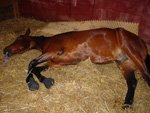
Two and Three Months
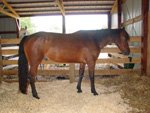
Four Months
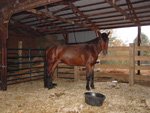
Five Months
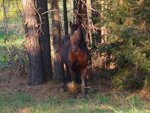
Six months
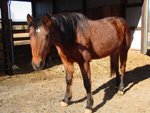
Seven months
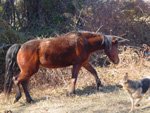
Eight months
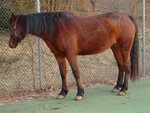
Nine months
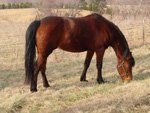
Ten months
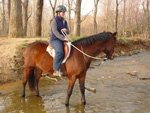
Eleven months plus
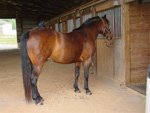
New Laminitis Ebook
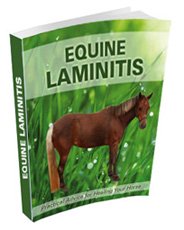
This ebook will teach you everything you need to know about laminitis plus give you practical ways to prevent, treat and manage the laminitic equine using safe and effective, natural methods.

